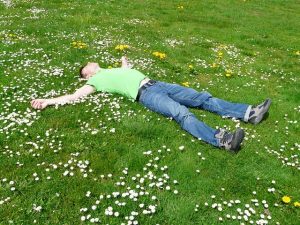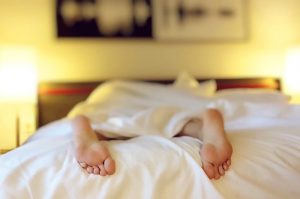-
 Integrated Center For
Integrated Center For
Oriental Medicine5924 W. Parker Rd., Suite 100
Plano, Texas 75093(972) 473-9070 Clinic Hours
By Appointment Only
-
Acupuncture
Meridian Point for Winter: Large Intestine 4
Large Intestine 4 is one of the most important and influential points in the entire body. The Chinese name for Large Intestine 4 is “He Gu” meaning union valley or converging valley. The point is located on the hand in the web between the thumb and index finger, also described as the depression where the index finger and thumb bones part. This area of the hand is often described as “valley like” hence the name converging valley.
The large intestine has many important functions in the body. Connected to the Western medicine function of the large Intestine, it is vital in digestion and bowel regulation, but it also has many functions above and beyond that in Chinese medicine. The large intestine is associated with the emotions of sadness and grief, it can help build immunity as it works as a paired channel to the lung meridian and has a big effect of the flow of Qi and blood in the body. continue reading
Why am I so TIRED…and how to fix
 A very common complaint that acupuncturists hear from our patients is that they constantly feel tired. Sometimes this fatigue is related to lack of sleep, but sometimes no amount of rest seems to alleviate the sleepiness.
A very common complaint that acupuncturists hear from our patients is that they constantly feel tired. Sometimes this fatigue is related to lack of sleep, but sometimes no amount of rest seems to alleviate the sleepiness.
From an acupuncture and Chinese Medicine perspective, there are numerous imbalances in our bodies that can cause the constant fatigue. Here are some of the most common imbalances that can lead to fatigue, lethargy, lack of energy and motivation, and tiredness. continue reading
Five Ways to Alleviate Insomnia
 Insomnia is a phenomenon almost everybody experiences at some point in their life. And most of us don’t know how or why it happens. Insomnia is defined as difficulty falling asleep, despite being tired. Combatting insomnia may be easier than you think. Here are five simple ways to fall asleep faster and stay asleep all night.
Insomnia is a phenomenon almost everybody experiences at some point in their life. And most of us don’t know how or why it happens. Insomnia is defined as difficulty falling asleep, despite being tired. Combatting insomnia may be easier than you think. Here are five simple ways to fall asleep faster and stay asleep all night.
Turn off your phone
In today’s society, we are almost surgically attached to our phones, iPads, laptops, etc. And while the devices keep us informed and connected, they are also harm us when it comes to our sleep. Smartphones and other gadgets emit blue wavelengths. These wavelengths suppress the production of melatonin in our bodies. Melatonin is a natural hormone that makes you feel sleepy. Also, the light given off by your devices can actually stimulate the mind, thus causing poor sleep. So as hard as it may be, buy a regular alarm clock and turn off the phone. continue reading
Treating Autoimmune Disease with the Integrated Model
The rates of autoimmunity have exploded worldwide. The number of known cases of autoimmunity in the United State is staggering. An autoimmune disease occurs when the body’s immune system attacks healthy tissue. The most common autoimmune disorders today include hypothyroidism, celiac disease, pernicious anemia, ulcerative colitis, Crohn’s disease and rheumatoid arthritis.
The majority of people with hypothyroidism have antibodies that attack their thyroid, thus an autoimmune disease called Hashimoto’s. Celiac disease causes antibodies to the intestinal enzyme transglutaminase in response to dietary gluten, the protein found in wheat. Pernicious anemia is a B-12 anemia caused by antibodies against intrinsic factor, the transport protein for B-12. Ulcerative colitis and Crohn’s disease are inflammatory bowel diseases that involve autoimmunity to the large intestine, and rheumatoid arthritis involves autoimmunity to joint cartilage.
Due to the complexity of treating autoimmune disorders, from our extensive experience, we found that not just treating with acupuncture and oriental medicine but integrating other innovative techniques helped to optimize our outcome. Acupuncture and oriental medicine is the foundation of all our treatment protocols. Acupuncture is noted especially for pain management, immune and hormonal regulation, addictions, digestive regulation, etc.
From the oriental medicine perspective, we counsel patients on the functional medicine necessary to treat the root cause of the disease. Innovative techniques include NAET (Nambudripad Allergy Ellimination Technique ), an extremely effective technique that can successfully desensitize allergies, as well as improve the assimilation of essential nutrients and NET (NeuroEmotional Technique ), a technique that enables a person to be free from emotions that had caused physiological changes and restrictions allowing one to move forward in life, career, health and in relationships with others. Functional Medicine approaches the body from the perspective of treating the root cause of disease.
Our next few posts will help you understand what causes autoimmune diseases, how acupuncture and the Integrated model can be used to treat autoimmune diseases, and how to enhance your endocrine system, which is essential in the prevention of autoimmune diseases and important in many other regulatory functions.
Contact ICFOM for more information on how acupuncture can help treat autoimmune disorders.
What Heals?
(an excerpt from “What Causes Disease and What Heals” by NetMindBody.com)
“It is important to realize that drugs, powders, potions and lotions don’t heal. Nor do chiropractic, medicine, acupuncture and psychotherapy. Doctors don’t heal. Only the wisdom of the body heals.”
Scott Walker, D.C.
Two Schools of Thought – Mechanism vs. Vitalism
The doctrine of mechanism holds that ALL natural phenomena can be explained by material causes and mechanical principles. Most mechanistic practitioner today use drugs and surgery. These methods FORCE the body to change. The doctrine of vitalism holds that life processes are guided by non material vital principle and are, thus, unable to be fully explained as physical and chemical phenomena. Most vitalistic practitioners today use natural methods which ALLOW the body to change itself.
In his book, “Divided Legacy: A History of the Schism in Medical Thought,” Harris L. Coulter, Ph.D., observes that over the thousands of years of recorded history, two main philosophical camps of practitioners have repeatedly clashed over this exact question, “What heals?” This brings to mind another question, which must be answered first, “What makes or usually keeps the body healthy in the first place?” The two camps are “Mechanism” and “Vitalism.” Each viewpoint has had its peaks and valleys of popularity and usage. In this last century, mechanistic practices (allopathic medicine) have peaked and are now falling, as Vitalism (alternative health care) ascends.
Thus, we have the health care revolution we are now witnessing. To underscore this revolution, a study by D. M. Eisenberg (JAMA 1998 Nov 11; 280 (18): 1569) stated, “Extrapolations to the US population suggest a 47.3% increase in total visits to alternative medicine practitioners, from 427 million in 1990 to 629 million in 1997, thereby exceeding total visits to all US primary care physicians.”
Although there is some cross over, most “US primary care physicians” are in the camp of Mechanism. Most alternative health care practitioners are in the camp of Vitalism.
Continue to “What does this mean to the patient?“
